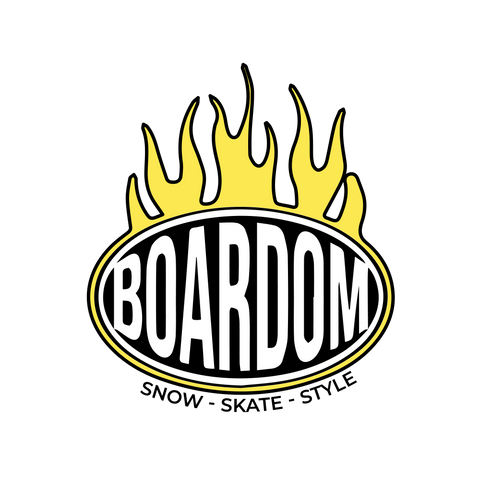Are you interested in joining the world of skateboarding? That’s awesome! And we want to help you make the best decision when it comes to the type of board you choose to start on.
One of the most common questions we get here at Boardom is whether or not a skater should choose a skateboard or a longboard.
The choice really comes down to what you want to do on a skateboard. Each board is built differently in order to accommodate different activities.
Do you want to commute and cruise? Do you want to do flips and tricks?
Even though you may be leaning toward one or the other, it’s important to understand the key differences between each board in order to make the best choice:
The Major Differences Between Longboards and Skateboards:
Although longboards and skateboards may seem similar, there are some major differences between the two. These boards are designed in different styles for different purposes.
Here are the major differences you should know between longboards and skateboards:
Shape and Size
Not only are longboards obviously longer than regular skateboards, but longboards also have a flat nose and tail. On a skateboard, the nose and tail are curved making it easier to land tricks and flips.
Longboards can be as long as 59 inches compared to a typical skateboard which comes in at about 36 inches long. However, longboards do come in sizes as short as 28 inches but still have a flatter nose and tail.
Deck Flexibility
The deck is the base of your board and, if you’re looking to learn new tricks, you want it to have enough flexibility to give you a spring-like feel - but enough stability while using your board.
However, if you are more interested in using your board to cruise around, you want one with a stiffer deck.
Longboards typically have a thicker deck and low flexibility, making them more appropriate for commuting and racing than doing jumps and tricks.
Trucks and Wheels
Both skateboards and longboards have wheels (obviously) but how they are attached differs. The base that attaches the wheel to the board is called the “truck” and it looks and operates differently for both boards.
On a skateboard, the trucks are rigid and narrow. This makes it easier for you to grind and land tricks. If you look at a skateboard’s trucks, you’ll notice they are the same size as the maximum width of the skateboard’s deck.
Longboards, on the other hand, have a more flexible truck to create a smoother ride. This is preferable if you plan to cruise for long distances or race downhill. The longboard truck is wider to provide more stability.
When it comes to the wheels, longboards have wheels that are large and soft whereas a skateboard’s wheels are smaller and harder. The large soft wheels are better suited for cruising while small hard wheels are made for shredded rails, ledges, and gaps.
Balance
Even though skateboards are best suited for performing tricks and jumps, you can learn how to do these on a longboard. Because they are larger and more stable, they are easier to balance on and can help you build confidence as a new skater.
Speed and Tricks
For doing tricks, grinding rails, skating on ramps, doing kickflips, and mastering ollies, skateboards are the way to go.
But if you are looking for a more stable riding experience because you plan to commute on your board or race your friends down a hill, a longboard is a better choice.
Longboards versus Skateboards: Which One Should I Choose?
Now that you know the differences between a longboard and a skateboard, let’s break it down again so you can decide which board is best for you:
Choose a Skateboard If You Want To:
- Learn street moves.
- Learn skatepark tricks.
- Move around quickly and with agility.
- Have something that’s easy to carry.
Choose a Longboard If You Want To:
- Go for chill rides.
- Commute long distances.
- Ride fast.
- Learn old-school tricks.
But What If I Want To Do A Little Bit of Both?
It may be that you want to do a little bit from both groups without dishing out money for two separate boards. Thankfully, you have options!
First of all, you can get a regular skateboard and have the larger longboard wheel mounted to it. Or, you can get a “hybrid” longboard or a smaller cruiser.
Cruisers allow you to do tricks and cruise comfortably, combining the best of both worlds!
Which One Is Best for a Beginner?
When you’re just getting into skating, standing on a regular skateboard may be difficult because of the small deck and shorter wheelbase (both of which make the board less stable). Even when you figure out how to balance yourself, you’ll have to learn how to navigate bumpy rides.
On a longboard, you can quickly overcome balance issues and probably get the hang of riding within a couple of hours! The big soft wheels give you a smooth ride and prevent you from coming to a full stop when you hit a crack or small rock (which could send you flying in the air).
Overall, longboards are best suited for skateboarding newbies until you get the hang of things - then you can switch over to a regular skateboard and start learning a trick or two!
Conclusion
Despite the differences between longboards and skateboards, both offer tons of fun! And each has its own subculture of skaters who share the same passion.
As far as boards go, they both have the same components (trucks, wheels, etc.) that make it easy to interchange parts and create a board that is unique to your goals and style.
Hopefully, this post has given you a good idea about the differences between longboards and skateboards and how to make the best choice.
If you have any questions, feel free to reach out to Boardom for more information!

